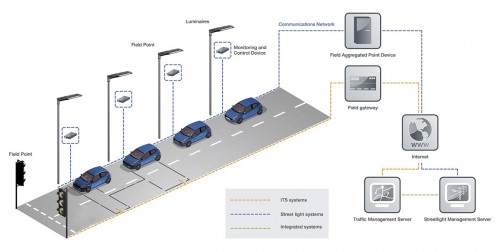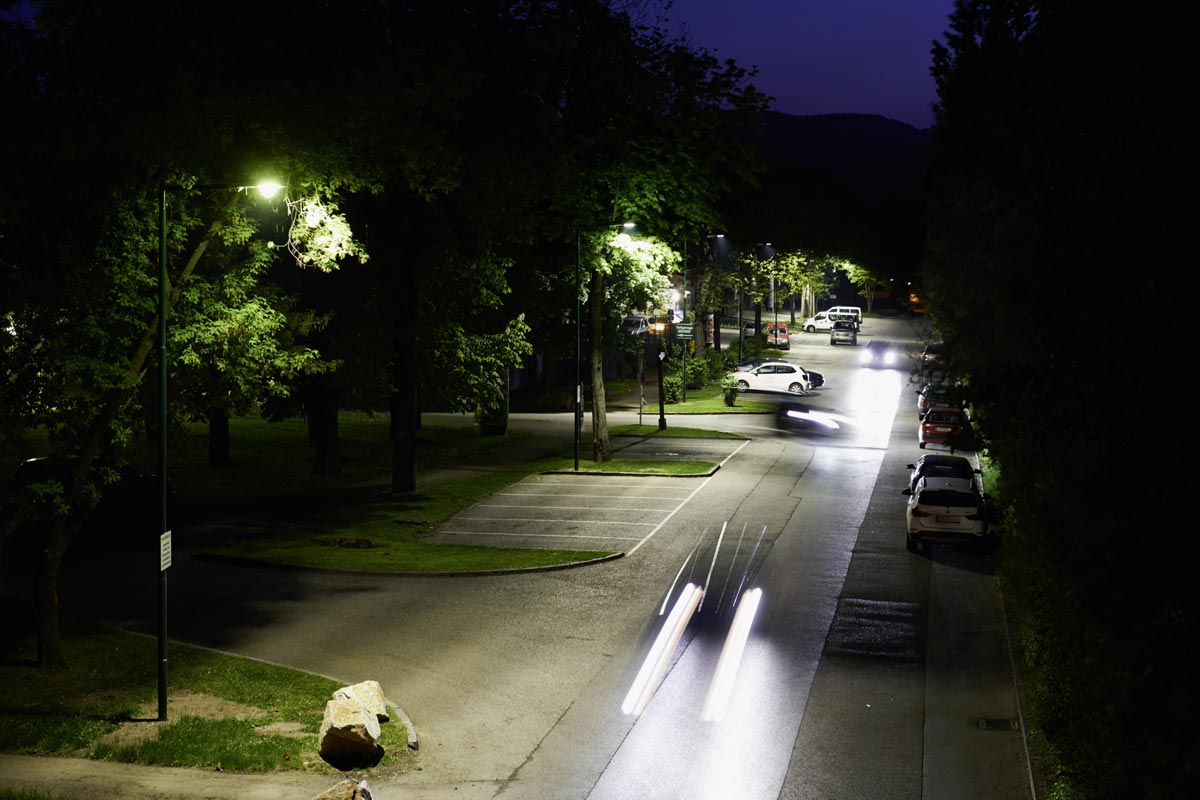Lighting roads and car parks consumes a great deal of electricity. This can be reduced significantly with the aid of modern LED lighting. Current developments in the field of outdoor lighting are aimed at improving energy efficiency even more by means of intelligent management.
With the Futurlux 2011 LED street lamp SWARCO Futurit have launched a product capable of achieving energy savings of up to 80 % vis-à-vis conventional types of street lamps, such as sodium-vapour, mercury-vapour or halogen lamps. In the SIRIUS project an integrated approach is now being implemented, to make it possible to provide “light as required” within the framework of a higher-level traffic management system. Sensors and a communications network are employed to adjust the brightness of the street lighting to actual traffic levels and thus save electricity.
In partnership with the Institute of Computer Technology at Vienna University of Technology, the municipal electricity company in Wels and the firm of Energy Changes, sensor-based services and maintenance services have been developed and implemented as software in a lighting management system. The sensor-based services use data from traffic sensors installed on site (as recorded in a traffic management system) as input. Data for the maintenance services come from the street lamps, which are equipped with a smart control and communication module. Data are exchanged between the systems via open, standardized interfaces. Commands such as “On/Off” or “Alter brightness” are transmitted to the lamps by wireless communication.
As a test, the system is currently running in three Austrian facilities, in Neunkirchen, Waidhofen/Thaya and Krems; the main focus is on regulating the lighting in line with traffic levels, i.e. the actual traffic situation is detected and a brightness setpoint is derived from it in the shape of an energy profile, by means of defined parameters.
Assessment reveals that, depending on volumes of traffic, savings of between 30 % and 50 % can be achieved on site. In the follow-on project Sirius+ the team is exploring further areas of application and ways to tie in data from other sensor systems.

